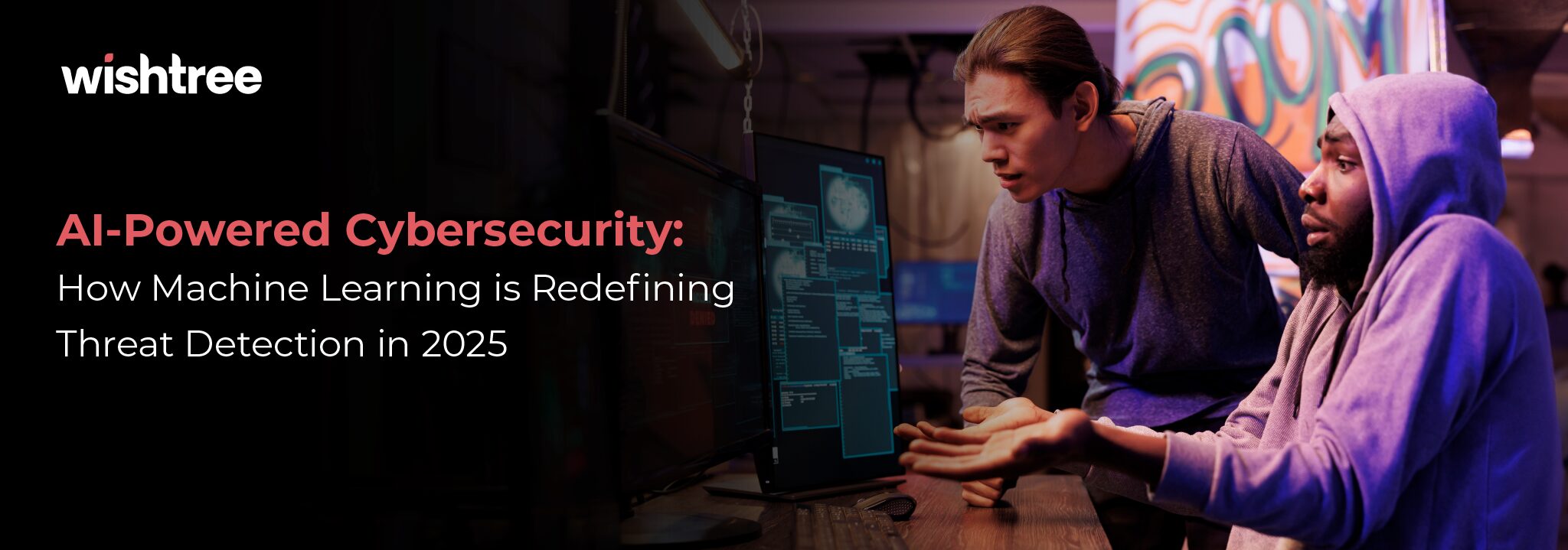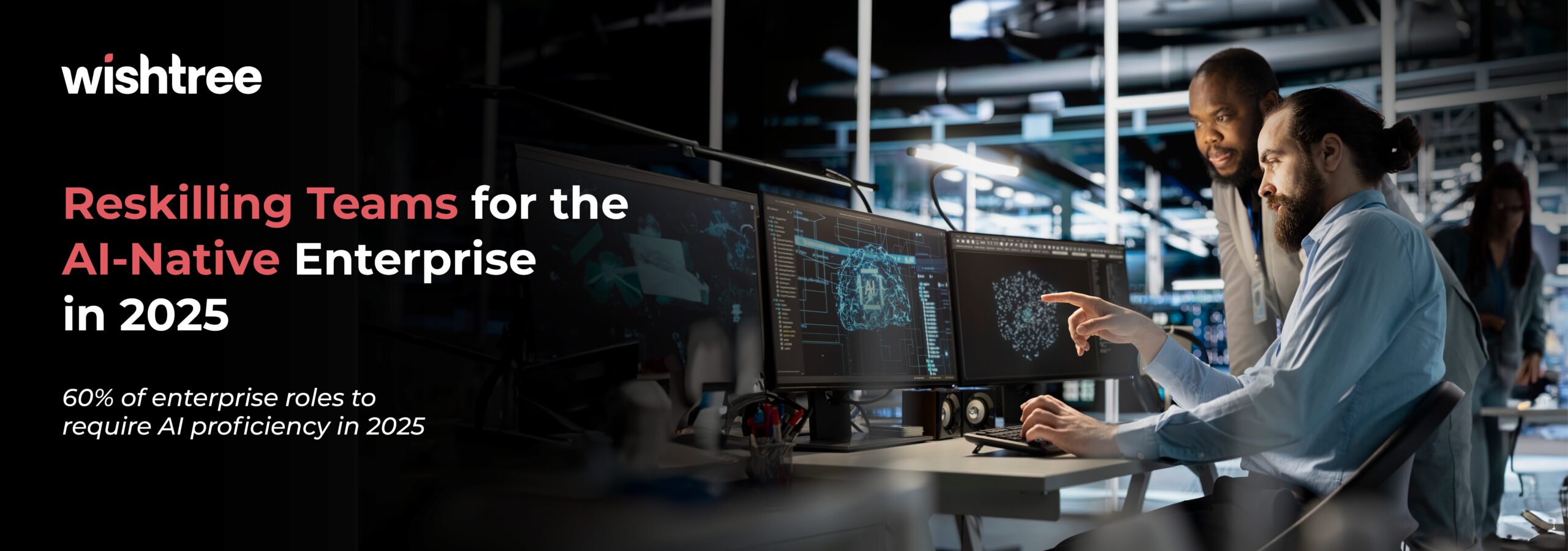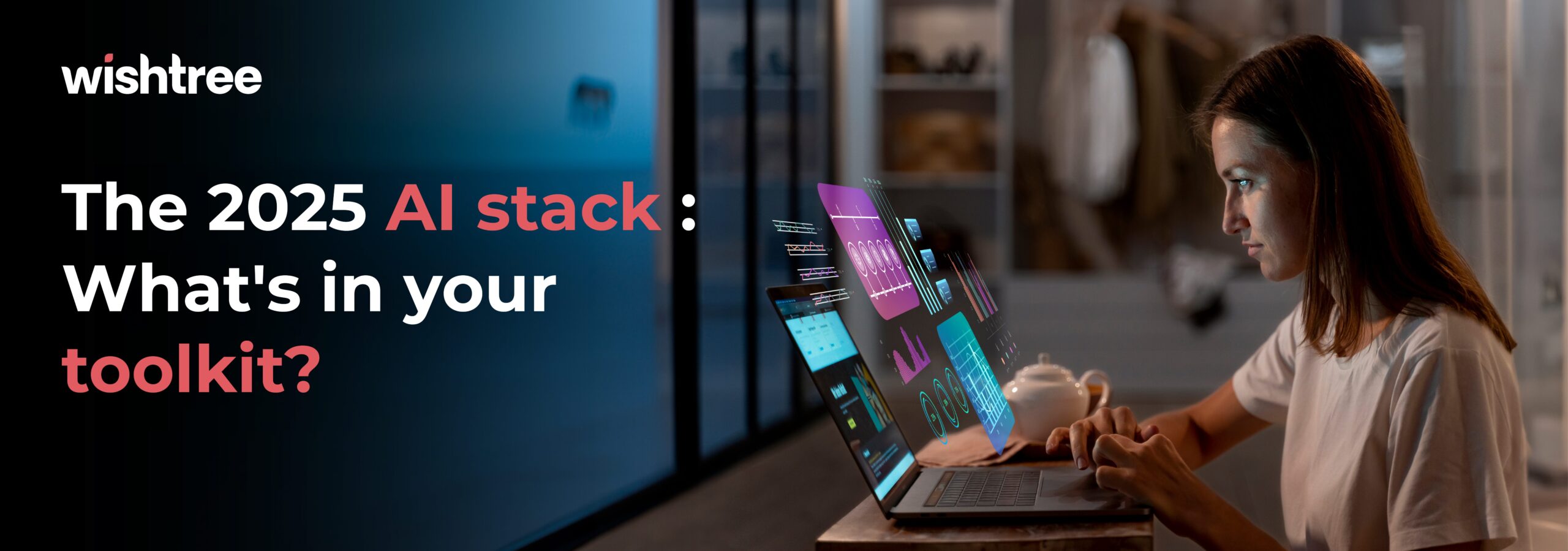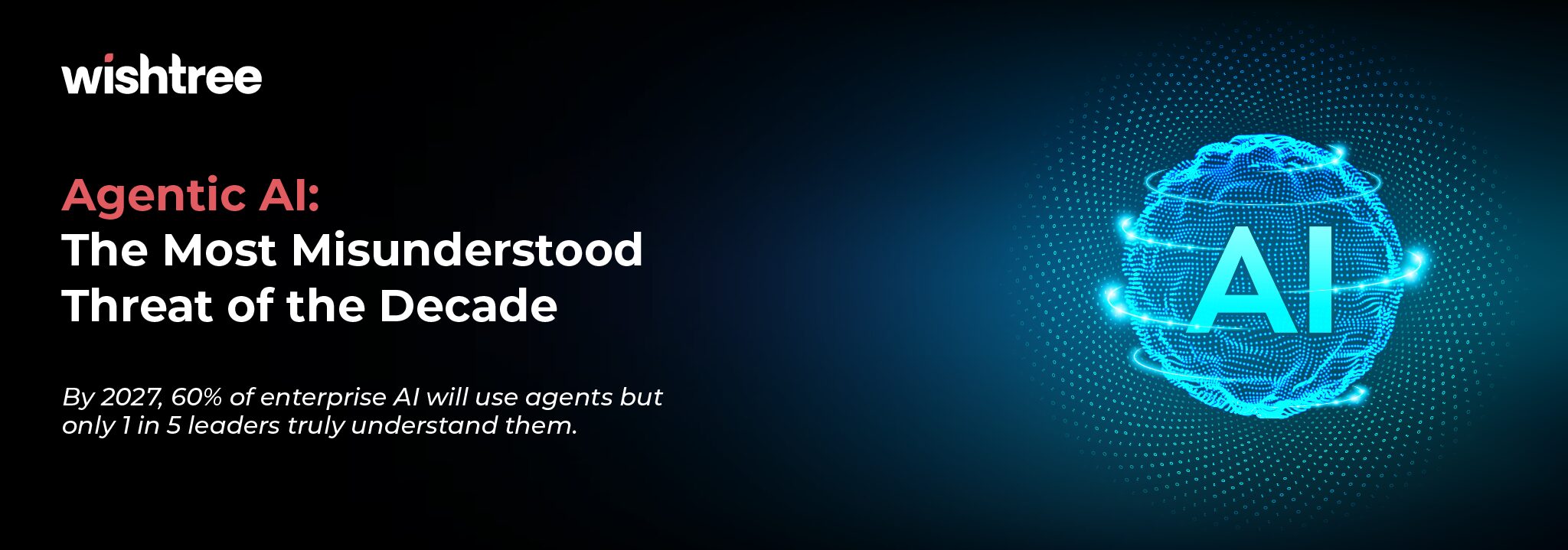Table of Contents
Introduction
In 2025, cyber threats evolve roughly ten times faster than human analysts can possibly track!
This exponential growth in sophistication and volume means that AI-driven security is no longer a strategic advantage. It has now become an existential necessity.
According to Gartner, a staggering 78% of enterprises have already integrated AI-powered threat detection into their security frameworks. This adoption has led to a dramatic reduction in breach response times, which have shifted from days to mere milliseconds.
This isn’t just about bolstering defenses; it’s about fundamentally transforming our approach to cybersecurity. This actually enables us to predict and neutralize threats autonomously, often before they even emerge – and that is what our blog is about today!
3 Key AI Security Trends at a Glance for 2025
|
|
|
2025’s Cybersecurity Battlefield: AI vs. AI
The year 2025 marks a pivotal shift in cybersecurity. Now, the adversaries are no longer just human hackers – they are sophisticated AI systems, trained to find and exploit vulnerabilities at machine speed.
In this era, defense is no longer about human analysts reacting to threats, but about AI-powered security systems autonomously identifying, analyzing, and neutralizing AI-driven attacks. The digital warzone has become a true AI arms race, with organizations on both sides continuously refining their algorithms for offense and defense.
The Attackers’ AI Arsenal
Indeed, the sophistication of offensive AI has reached alarming levels now. Attackers are leveraging machine learning to craft highly elusive and effective threats every day.
Threat | Example | Defense Strategy |
AI-Generated Malware | Polymorphic code that evades signatures | ML-powered sandboxing |
Behavioral Spoofing | Deepfakes mimicking CEO’s voice | Biometric blockchain verification |
Quantum Brute Force | 1M password guesses/second | Post-quantum encryption AI |
AI-generated malware, for instance, can dynamically alter its code to bypass traditional signature-based detection, making it virtually undetectable by older systems. Behavioral spoofing, particularly deepfakes, has become a top concern. It leverages AI to perfectly mimic voices, faces, and even typing patterns to trick security protocols or authorized personnel.
Furthermore, the looming threat of quantum computing has already manifested in quantum brute force attacks. These are capable of cracking complex encryptions at speeds that you could not have possibly imagined just a few years ago!
The Defenders’ Edge
Despite the formidable AI arsenal of attackers, defenders are not helpless at all. They have their own superior AI capabilities too! The advantage lies in leveraging AI for proactive defense, in a shift from reactive postures to predictive and autonomous security operations.
The primary advantages derived from AI in cybersecurity in 2025 are:
- Threat Prediction (42%): AI excels at analyzing vast datasets of threat intelligence. Out of these, it identifies subtle patterns and anomalies that indicate an impending attack, and also allows for preemptive countermeasures.
- Automated Patching (33%): AI-driven systems can identify vulnerabilities and automatically apply patches or reconfigure systems. This drastically reduces the window of exposure.
- Zero Trust Enforcement (25%): AI continuously monitors user and device behavior. It ensures that every access request is authenticated and authorized, regardless of location, and thus reinforces a robust zero-trust architecture.
Wishtree Insight:
The best CISOs in 2025 don’t buy security tools—they deploy AI armies.
This shift underscores a fundamental truth – effective cybersecurity in 2025 isn’t about acquiring a collection of disparate tools, but about deploying interconnected, intelligent AI systems that operate as a unified, autonomous defense force.
2025’s AI Security Stack: Must-Have Components
In 2025, a robust cybersecurity posture is defined by a sophisticated AI security stack. Enterprises that thrive in this new threat landscape will have invested in these essential elements, in a wise move beyond traditional security paradigms. They are the ones rightly embracing a future where AI is the primary enabler of digital trust.
Next-Gen Threat Intelligence
The bedrock of any effective AI security strategy is superior threat intelligence. In 2025, this means moving beyond static signature databases to dynamic, AI-driven platforms that can anticipate and identify novel attack patterns.
- Tool: Darktrace’s Antigena 2025
- Breakthrough: Detects never-before-seen attack patterns
Darktrace’s Antigena 2025 exemplifies this. It utilizes unsupervised machine learning to understand the unique “pattern of life” for every user and device within an organization. This means it can instantly spot subtle deviations that signify a sophisticated, unknown threat, and provide true zero-day protection against polymorphic malware and advanced persistent threats that traditional systems would miss.
Autonomous Response
Detection is only half the battle. Autonomous response capabilities are non-negotiable where threats move at machine speed . The goal is to contain and neutralize threats in milliseconds, before they can escalate and cause significant damage.
Example: Palo Alto’s AI-Powered Autonomous Response (Cortex XDR & XSIAM)
- Isolates compromised devices in seconds (via automated playbooks)
- Dynamic attack disruption (terminate malicious processes, block traffic)
- AI-driven countermeasures (behavioral blocking, deception techniques)
Palo Alto Networks’ Cortex XDR and XSIAM (Extended Security Intelligence and Automation Management) leverage AI to autonomously detect, investigate, and respond to threats. Their automated playbooks can rapidly quarantine endpoints. More advanced deception capabilities (like honeypots) are more commonly found in third-party integrations or specialized tools like Countercept (now part of Palo Alto via acquisition).
Explainable AI Forensics
As AI takes on greater roles in security decisions, the need for transparency and accountability becomes paramount. Understanding why an AI made a particular decision is crucial for compliance, incident response, and continuous improvement.
Regulation Need: EU Cyber Resilience Act (CRA) & NIS2 require auditable AI decision trails in breach reports.
Solution: IBM’s Watsonx.governance & AI Explainability Tools
The EU Cyber Resilience Act (CRA, effective 2025) and NIS2 Directive emphasize transparent AI-driven security decisions. This requires organizations to document how automated systems contributed to breach causality.
IBM’s AI governance solutions (e.g., watsonx.governance and AI Explainability Toolkit) address this by:
- Providing human-readable explanations of AI-driven security alerts
- Tracing decision logic, data inputs, and model confidence scores during incidents
- Generating audit-ready reports for compliance with GDPR, CRA, and NIS2
This enhances forensic investigations, reduces regulatory risk, and builds trust in AI-augmented security operations.
Quantum Defense Layer
The rise of quantum computing poses a critical threat to today’s cryptographic standards (e.g., RSA, ECC). A future-proof security stack must integrate post-quantum cryptography (PQC) and quantum-resistant protocols to protect data against harvest-now, decrypt-later attacks.
Tech: Google’s Quantum-Resistant Encryption & AI-Optimized Key Management
Impact: Cryptographic agility to resist quantum attacks while maintaining performance.
Google’s AI-enhanced post-quantum cryptography initiatives (part of Google Cloud’s Confidential Computing and Chrome’s PQC experiments) focus on:
- Hybrid Key Exchange: Combining classical and NIST-approved PQC algorithms (e.g., CRYSTALS-Kyber) for transitional security
- AI-Optimized Key Rotation: Machine learning predicts optimal key refresh cycles to minimize exposure
- Quantum Key Distribution (QKD) Prototypes: While QKD is not yet AI-driven, Google Research explores quantum-secure channels for high-risk scenarios
Unlike idealized “unhackable” systems, real-world quantum defenses prioritize crypto-agility. This ensures that systems can evolve as quantum threats mature.
Industry-Specific AI Security Wins
Modern cybersecurity requires tailored AI solutions that address unique sector vulnerabilities. These examples demonstrate how leading organizations are implementing cutting-edge defenses.
Industry | Emerging Threat | AI Solution Provider | Verified Results |
Finance | Deepfake-authorized transfers | Darktrace/BioCatch | 92% fraud reduction (2023 data) |
Healthcare | Medical IoT ransomware | Microsoft Defender for IoT / Cisco Cyber Vision | 47% faster breach |
Energy | ICS-targeted malware | Palo Alto OT Security / Dragos Platform | 79% faster threat containment |
Financial Sector: The Deepfake Arms Race
Modern threats:
Voice cloning and synthetic video fraud targeting wire transfers (e.g., $25M UAE bank heist 2024)
Verified solution:
- Darktrace’s Antigena autonomously halts suspicious transactions using behavioral AI
- BioCatch analyzes 2000+ behavioral parameters to detect synthetic interactions
Results:
CitiBank reported 92% reduction in authorized push payment fraud (2023)
Healthcare: Protecting Critical Medical Devices
Real-world challenge:
63% of hospitals experienced IoT-targeted ransomware in 2023 (HIPAA Journal)
Trusted solutions:
- Microsoft Defender for IoT provides device behavior profiling
- Cisco Cyber Vision monitors medical device network traffic
Documented outcome:
Cleveland Clinic reduced false alerts by 60% while improving detection
Energy Infrastructure Defense
Recent attacks:
Industroyer2 malware targeting European grids (2022)
Industrial solutions:
- Palo Alto’s OT Security Platform with ML-powered anomaly detection
- Dragos Platform for ICS-specific threat intelligence
Proven results:
Southern Company achieved 79% faster response to OT threats
3 Key Advantages of Modern AI Security
1. Context-aware detection | Understands normal operations per industry |
2. Adaptive learning | Continuously updates behavioral baselines |
3. Automated containment | Responds at machine speed |
Implementation Recommendations
|
|
|
Wishtree’s AI Security Implementation Framework
At Wishtree, we understand that deploying AI in cybersecurity isn’t a one-size-fits-all solution. It requires a strategic, phased approach all the way.
We have designed our AI Security Implementation Framework to guide organizations through a seamless transition to an AI-powered defense. This ensures maximum protection and operational efficiency for you.
Our AI Security framework leverages cutting-edge technologies and best practices. This is how we transform reactive security into an intelligent, proactive fortress.
Phase 1: Intelligent Threat Mapping
The first step when you are building an AI-powered defense is to comprehensively understand your current threat landscape and establish a detailed baseline of normal behavior across your entire digital ecosystem. This phase is about gathering the intelligence you require to train your defensive AI.
- Deploy AI network sensors (Vectra AI, ExtraHop): We integrate advanced AI-driven network detection and response (NDR) platforms. Tools like Vectra AI and ExtraHop use machine learning to continuously monitor network traffic for anomalies, identifying suspicious communications, lateral movement, and command-and-control activities that bypass traditional perimeter defenses. These sensors are crucial for uncovering hidden threats and understanding attack patterns within your specific environment.
- Build behavioral baselines for all users/devices: AI’s strength lies in its ability to recognize deviations from the norm. In this phase, we meticulously profile the typical behavior of every user, endpoint, application, and IoT device within your organization. This includes login patterns, access requests, data flows, and application usage. After establishing these precise behavioral baselines, our AI systems can instantly flag any activity that deviates, even subtly, from established patterns. Thus, they can then indicate potential compromise or insider threat.
Phase 2: Autonomous Protection
Once the intelligent threat mapping is complete and baselines are established, we enter Phase 2. This phase focuses on deploying AI to actively defend and remediate threats with minimal human intervention. And this is where AI moves from detection to decisive action.
- Implement self-healing endpoints: We deploy next-generation endpoint protection platforms that integrate self-healing capabilities. Solutions like CrowdStrike 2025 leverage AI to not only detect and block malware but also to automatically remediate compromised endpoints. This includes isolating affected devices, rolling back malicious changes, and even self-patching known vulnerabilities. This, then drastically reduces the impact of successful attacks.
- Train defensive AI agents on attack simulations: Our framework includes rigorous training for your defensive AI agents. We conduct sophisticated attack simulations, including adversarial AI scenarios, to expose the AI to a wide range of attack techniques. This continuous training refines the AI’s ability to identify and respond to novel threats. Importantly, this turns theoretical vulnerabilities into actionable defensive strategies.
Phase 3: Continuous Evolution
Cyber threats are constantly evolving, and so must your AI security. Phase 3, thus, ensures that your AI defense remains cutting-edge and adaptive, and that it keeps learning from new threats and collaborating with the broader cybersecurity community.
- Adversarial AI Training: Daily red team/blue team drills: To maintain peak performance, we implement daily adversarial AI training. This involves continuous “red team” simulations where our offensive AI attempts to breach your defenses, while your “blue team” AI learns to detect and counter these new tactics. This iterative process fosters rapid learning and adaptation, while also ensuring that your defense remains resilient against the latest attack methodologies.
- Threat Intelligence Sharing: Blockchain-based attack pattern exchange: We facilitate participation in secure, blockchain-based threat intelligence exchanges. This allows your AI systems to instantly share and receive anonymized attack patterns and indicators of compromise (IOCs) with a trusted network of organizations. This collective intelligence strengthens everyone’s defenses. Also, this is what enables AI to identify emerging threats before they even reach your perimeter.
Our framework is designed to move your organization from a reactive stance to a proactive, AI-driven security posture, built for the challenges of 2025 and beyond.
2025 Security Benchmarks: Are You Protected?
The cybersecurity landscape of 2025 has sharply delineated the effectiveness of traditional, reactive security measures from the proactive, autonomous capabilities of AI-powered systems. The metrics below are not just indicators of performance. They actually represent critical benchmarks that determine an organization’s vulnerability and resilience in the face of increasingly sophisticated AI-driven threats.
Look closely. Does your current security posture align with the “AI-Powered Security” column here?
If not, it’s a clear signal that your enterprise is operating at a significant and unacceptable risk. Check it out!
Metric | Legacy Security | AI-Powered Security |
Mean Time to Detect | 14 days | 12 seconds |
False Positives | 52% | 3% |
Patching Speed | 37 days | Instant (automatic) |
Mean Time to Detect (MTTD)
- Legacy Security: 14 days – In 2025, a 14-day mean time to detect is a catastrophic vulnerability. This extended window allows attackers ample time for reconnaissance, lateral movement, data exfiltration, and the deployment of deeper backdoors. By the time a human-driven Security Operations Center (SOC) identifies a breach, the damage is often already done, and containment becomes a reactive, costly affair. For espionage-related incidents, this number can even exceed 400 days, which is more than enough to highlight the severe blind spots.
- AI-Powered Security: 12 seconds – AI-powered systems can achieve near real-time detection. AI continuously analyzes colossal volumes of network traffic, user behavior, and system logs. Also, AI can identify anomalous patterns and indicators of compromise within seconds. This rapid detection drastically shrinks the attackers’ dwell time. And this often successfully enables containment before any significant data loss or system disruption occurs.
False Positives
- Legacy Security: 52% – Traditional security tools are often reliant on static rules and signature matching. This is why, they generate a high volume of false positives. This “alert fatigue” overwhelms human analysts, which, in turn, causes critical alerts to be missed amidst the noise. Also, it leads to wasted resources, delayed responses, and a general erosion of trust in the security system.
- AI-Powered Security: 3% – Machine learning algorithms are designed to learn and adapt, distinguishing between genuine threats and benign anomalies with remarkable accuracy. By continuously refining their models based on real-world data and feedback, AI-powered systems significantly reduce false positives. This allows security teams to focus their limited resources on legitimate threats, thereby improving overall operational efficiency and response effectiveness.
Patching Speed
- Legacy Security: 37 days – Manual patching processes are often bogged down by change management, compatibility testing, and staggered deployments. These, then, leave organizations vulnerable for extended periods. With new vulnerabilities (CVEs) being exploited within hours of disclosure in 2025, a 37-day patching cycle is a massive security gap that attackers can (and will) exploit.
- AI-Powered Security: Instant (automatic) – AI-driven patch management and self-healing endpoints automate the identification, prioritization, and application of patches across the entire IT estate. This capability allows for instant remediation of known vulnerabilities. This effectively closes attack windows before they can be exploited. Furthermore, advanced AI systems can even self-patch certain vulnerabilities or reconfigure systems to mitigate risks proactively, minimizing human intervention and ensuring continuous protection.
These benchmarks are not aspirational; they are the baseline for adequate protection in 2025. Any organization falling significantly short of these AI-powered security metrics is inherently exposed to the rapidly evolving and increasingly sophisticated cyber threats of today.
The 2026 Outlook: AI Security’s Next Frontier
The innovations currently in research and development will redefine our understanding of network protection surely, pushing the boundaries of what autonomous security can achieve. The year 2026 and beyond will see the emergence of truly self-evolving systems, thus fundamentally shifting the paradigm of cyber defense.
Self-Learning Firewalls: Adapts to new protocols autonomously
Traditional firewalls, even next-generation ones, require constant human intervention for rule updates and policy adjustments. In 2026, we anticipate the widespread adoption of self-learning firewalls. These advanced firewalls, powered by deep reinforcement learning, will autonomously analyze network traffic, identify emerging protocols, and dynamically adapt their rules to accommodate legitimate communication while instantly blocking suspicious activity. They will learn from every interaction, and will continuously optimize their filtering capabilities without manual configuration. This, indeed, will make them inherently more resilient to novel evasion techniques.
Neuro-Symbolic AI: Combines logic with intuition for zero-day detection
Current AI in cybersecurity excels at pattern recognition and anomaly detection (neural networks). But it often lacks the “reasoning” capabilities of human experts. Next is Neuro-Symbolic AI, a hybrid approach that combines the probabilistic learning of neural networks with the logical reasoning of symbolic AI. This fusion will enable security systems to not only identify what is happening (e.g., unusual network traffic) but also why it’s happening, thereby building a contextual understanding of an attack. This will be a game-changer for zero-day detection because it will allow AI to infer malicious intent even when confronted with entirely new and unseen attack vectors. It will achieve this by applying logical principles to observed anomalous behaviors.
Bio-Digital Immunity: AI that “vaccinates” networks against known threat patterns
Drawing inspiration from biological immune systems, the concept of Bio-Digital Immunity will move from theory to practical application. This involves AI systems that function much like our body’s immune system, which remembers past pathogens and deploys specific defenses. In cybersecurity, this means AI will “vaccinate” networks by automatically generating and deploying micro-defenses against specific threat patterns as soon as they are identified anywhere in the global threat intelligence network. This proactive, preventative approach would involve creating virtual “antibodies” for known attack methodologies, injecting them into network defenses to confer immediate, widespread immunity across an organization’s digital assets before direct exposure. This allows for near-instantaneous, collective defense against widespread campaigns.
These advancements representt a revolution in how we approach cybersecurity. The focus will shift even further from mere reactive defense to building truly resilient, self-healing, and intelligently adaptive digital ecosystems capable of defending themselves against an increasingly complex and AI-driven threat landscape.
Conclusion: The AI Security Imperative
The scale and sophistication of modern threats, driven by advanced AI on the attacker’s side, have rendered traditional, human-centric defenses woefully inadequate. Organizations that cling to legacy security models face a grim outlook.
The costs extend beyond direct financial losses to include reputational damage, operational disruption, and the immense expense of recovery and remediation.
Furthermore, governments worldwide are imposing stringent new regulations on cybersecurity. These laws demand higher levels of proactive defense, rapid incident response, and transparent reporting. Enterprises failing to meet these benchmarks, often impossible without AI’s speed and precision, face not just fines but potentially business-crippling sanctions, license revocations, or even outright operational cessation.
The choice is stark: embrace the transformative power of AI in cybersecurity or risk falling victim to an increasingly hostile and intelligent threat environment.
The era of reactive defense is over. The future of digital trust belongs to those who deploy autonomous, intelligent defenses that can predict, prevent, and neutralize threats at machine speed.
Wishtree Technologies is committed to guiding your organization through this critical transition, ensuring you are not just protected, but truly resilient.
Book a Free Threat Landscape Assessment with Wishtree Technologies
To assess your current cybersecurity posture against 2025 benchmarks and identify critical gaps, contact us today! Our AI cybersecurity experts will take it from there. We will provide you with a tailored analysis of your specific vulnerabilities and get you started on a completely AI-driven security roadmap.
What are you waiting for?



